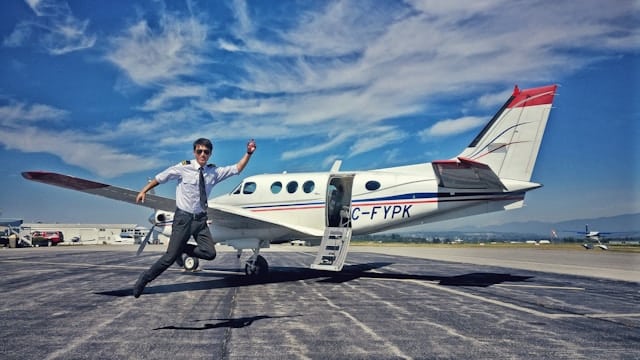Airline pilot training is a rigorous and demanding process that requires individuals to possess both technical skills and a high level of responsibility. This comprehensive guide aims to provide aspiring pilots with an understanding of what it takes to become an airline pilot, including the necessary qualifications, training programs, and career prospects. Whether you dream of flying commercial passenger planes or cargo aircraft, this guide will help you navigate your way through the exciting world of aviation.
1. Qualifications for this noble profession
Achieving your dream of becoming an airline pilot starts with meeting the necessary qualifications. While the exact requirements for airline pilot training may vary depending on the country and airline, some common prerequisites include:
a) Education: Most airlines require applicants to have a high school diploma or equivalent qualification. Though not mandatory, a college degree in aviation or a related field can enhance your prospects of getting into a flight school.
b) Age: To become an airline pilot, you must be at least 18 years old in most countries. However, keep in mind that different airlines may have different employment age restrictions.
c) Medical fitness: Good health is crucial for pilots as they are responsible for the safety of hundreds of passengers. Prospective pilots must pass rigorous medical evaluations conducted by certified aviation medical examiners to obtain a First-Class Medical Certificate.
d) Language proficiency: English is considered the international language of aviation. Aspiring pilots need to demonstrate proficiency in written and spoken English.
2. The Flight Training Journey
The journey towards becoming an airline pilot involves several stages and milestones:
a) Private Pilot License (PPL): The PPL is the first step on your flight training journey. It enables you to fly single-engine piston aircraft privately but not commercially. You will learn fundamental skills such as pre-flight checks, taking off, landing, navigation techniques, and basic instrument flying.
b) Instrument Rating (IR): An IR allows you to fly an aircraft purely based on instruments without visual references. This rating is essential for pilots who aim to fly in adverse weather conditions or conduct flights at night.
c) Commercial Pilot License (CPL): The CPL expands on the skills learned during the PPL and IR stages. Pilots acquire knowledge in advanced flight planning, aerodynamics, aircraft systems, and emergency procedures. The CPL enables pilots to be compensated for their flying services, making it an important milestone in an airline career.
d) Multi-Engine Rating (ME): Adding a multi-engine rating to your CPL allows you to operate aircraft with multiple engines. It includes learning about engine management, performance calculations, and handling emergencies specific to multi-engine aircraft.
e) Airline Transport Pilot License (ATPL): The highest level of pilot certification is the ATPL, which qualifies pilots to operate commercial and transport category aircraft. Obtaining an ATPL requires completing additional flight time and theoretical exams covering various aviation subjects such as meteorology, air law, and navigation.
3. Flight School Options
When it comes to flight schools, aspiring pilots have several options to choose from:
a) Integrated Flight Training: Integrated training programs offer a structured approach where students begin training from scratch and progress through each license or rating seamlessly. These programs are generally offered by dedicated flight schools or academies worldwide.
b) University/ College Aviation Programs: Many universities and colleges offer full-time aviation degree programs that include flight training as part of the curriculum. These programs provide students with both academic knowledge and practical flying skills simultaneously.
c) Modular Training: Modular training allows flexibility for individuals who don’t wish to commit to a full-time program or prefer a self-paced learning environment. It entails completing each license or rating separately at their own pace with different flight schools or instructors.
Conclusion
Becoming an airline pilot requires dedication, hard work, and financial investment in training. It is crucial for aspiring pilots to thoroughly research and consider their options when selecting the right training program. With the right qualifications, flight training, and continuous commitment to learning and professional development, you can soar to new heights in your aviation career. Whether it’s flying passengers across continents or delivering cargo worldwide, the life of an airline pilot is indeed an exhilarating one.




Comments are closed.